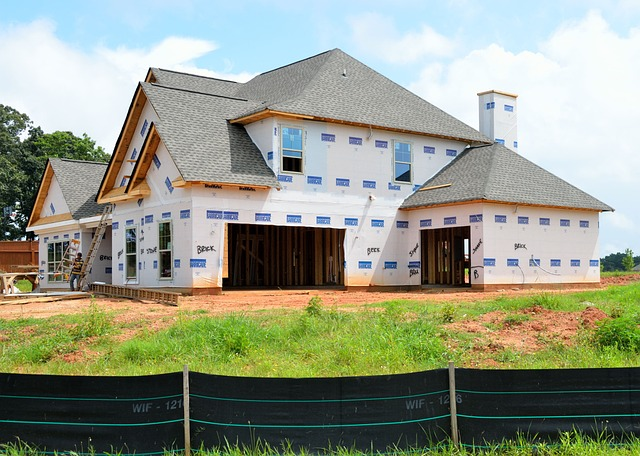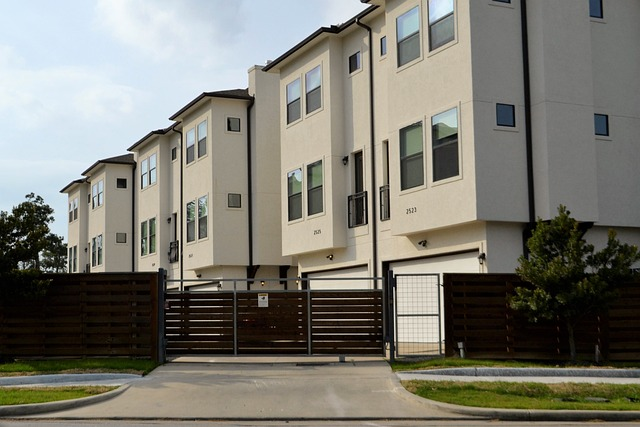Exploring Creative Solutions for Realtors in a Record-Low Housing Inventory Market
I Would Sell, But There Are NO HOMES For Sale, Where Will I Go?
From bustling urban centers to tranquil suburban neighborhoods, real estate professionals across the board are grappling with a unique challenge, the record-breaking scarcity of available existing inventory. This dearth is not merely a concern for homebuyers; it’s also posing a conundrum for real estate agents as they endeavor to address sellers’ valid concerns. The latest data from Altos Research serves as a stark reminder of the current reality, revealing a meager 495,000 active listings. This number stands in stark contrast to historical data showing that 1 million listings typically deemed essential for a balanced market. As agents find themselves at the crossroads of heightened housing demand and limited housing supply, innovative strategies have transformed from optional tools into imperative resources.
In the ever-evolving landscape of a housing market in need of more inventory, a new and perplexing challenge has taken center stage, confounding both homeowners and realtors alike: the staggering scarcity of available single family homes for sale.
As the housing inventory reaches historic lows in numerous regions across the country, the echoing question becomes more pronounced with each passing day: “I would sell, but there are simply no homes for sale. Where will I go?”
In this comprehensive blog, we will dive deep into the heart of this complex conundrum, unraveling the intricate web of factors contributing to the scarcity of new listings and exploring a plethora of creative solutions that realtors can harness to adeptly navigate this unique housing market terrain.
The Inventory Conundrum: Where Have All the Homes Gone?

At the core of the real estate market’s delicate dance lies the symbiotic relationship between supply and demand for houses. Traditionally, when housing demand outpaces supply, sales prices trend upward, and inversely, when housing inventory surpasses demand, home prices experience a downward trajectory.
However, the present circumstances deviate markedly from this delicate equilibrium. Housing inventory levels have plummeted to historic lows in numerous housing markets, leaving potential sellers immobilized by the disconcerting uncertainty of finding suitable single family homes.
The root of this unprecedented scarcity is intertwined with a tapestry of interconnected factors:
Pandemic Fallout
The reverberations of the global COVID-19 pandemic have cast an indelible shadow on the normal rhythm of the real estate market.
Many homeowners who might have otherwise contemplated moving prior to the pandemic have opted to stay put, thereby initiating a chain reaction that cascades into reduced inventory levels.
Lack of New Construction

The persistent lack of new construction projects has exacerbated the shortage of available homes.
A trifecta of supply chain disruptions, labor shortages, and regulatory challenges has culminated in an environment where the pace of new construction cannot keep up with burgeoning demand.
Historically Low Interest Rates
The allure of historically low mortgage rates has proven to be a double-edged sword. While it incentivizes homeowners to refinance and retain their current properties, it also deters them from pursuing an upgrade or downsizing.
This phenomenon further constricts the already limited housing inventory available for sale.
Economic Uncertainty

Lingering economic uncertainties, even as the global economy gradually rebounds, have instilled a sense of trepidation among potential sellers.
This hesitation to list their homes without a concrete plan for their subsequent move stems from the very real fear of not securing a new residence in a timely manner.
Creative Solutions for Realtors: Navigating Uncharted Waters
In the face of this extraordinary low-inventory environment, realtors are called upon to transcend conventionality and embrace innovative strategies to fulfill the diverse needs of their clients. To this end, a repertoire of creative solutions has emerged, promising a glimmer of hope amidst the challenge.
Rewriting the Narrative: The Art of Bridge Loans

Consider championing the unique strategy of encouraging clients to purchase before selling their current property. Some clients may possess separate funds designated for a down payment, rendering their home equity irrelevant for this endeavor.
Enter the world of bridge loans—an ingenious bridge that spans from the present property to the future one. By harnessing this financial tool, clients secure their next dream home before parting ways with their existing residence. As a real estate professional, it’s imperative to familiarize yourself with this financial avenue and establish connections with lenders well-versed in bridge loans.
Rent-Back Agreements
Advocate for sellers to negotiate rent-back agreements with potential buyers. This symbiotic arrangement permits the seller to reside in their sold property for a mutually agreed-upon period post-sale, thereby affording them additional time to identify and secure their next living space.
Empowering Flexibility: The Contingency Advantage
Harness the power of a strategic “Contingent on Seller finding suitable housing” clause in negotiations. In the current competitive market, such a clause can wield substantial negotiation prowess. This contractual arrangement grants clients a generous timeframe—typically spanning 90 to 120 days—to secure their next residence. In the current seller’s market, buyers often exhibit remarkable flexibility and are willing to accommodate such contingencies. This approach effectively eliminates the need for double moves while offering sellers the necessary window to locate their next dream home.
Off-Market Listings
Embrace the concept of off-market listings as a means to expedite the selling process. Engage with potential sellers to gauge buyer interest prior to formally listing the property. This strategic approach can truncate the time the homeowner spends in limbo while their property is on the market.
Selling, Leasing, and Searching: A Tactful Pause

Propose the concept of selling the current property, temporarily transitioning to renting, and then embarking on the quest for the perfect new abode. This strategy equips clients with immediate liquidity from their home sales, liberating them from the pressures of aligning closing and possession dates. This newfound financial freedom positions clients to pounce on the right property when it materializes. In parallel, the interim rental phase grants clients the flexibility to explore various housing options at a leisurely pace.
Transforming Assets: Unlocking Rental Investment Potential
Encourage clients to perceive their current property as a strategic investment opportunity. Retaining the property as a rental not only facilitates rental income streams but also allows clients to leverage existing low-interest mortgage rates. In an era marked by robust credit scores among Americans, this investment avenue is far more attainable than it might initially appear. Furthermore, in select markets, the transformation of single family homes into short-term rentals can yield impressive financial returns, making this path an appealing option for a wide range of clients.
Networking and Collaborations

Foster an intricate web of professional relationships with realtors spanning different markets. This collaborative network can unlock a treasure trove of potential properties for your clients, including those that might not be publicly listed homes.
Pioneering Pathways: Embrace the World of New Construction
Amidst the shortage of available resale homes, the realm of new construction beckons with promise. Encourage your clients to embrace this alternative, as it presents a multitude of advantages. Builders frequently extend in-house financing options that boast reduced interest rates—currently hovering between an enticing 4.5% to 5.5%.
Additionally, the allure of owning a pristine, brand-new home—unencumbered by renovation concerns or inspection intricacies—cannot be overstated. Furthermore, by opting for new construction, your clients sidestep the chaotic bidding wars that often typify the market, given that approximately 30% of available single family homes are newly constructed.
Temporary Housing Solutions
Research and curate a comprehensive list of short-term housing options within your locality. Equipped with this roster of temporary living solutions, you can alleviate the stress of finding a new home swiftly, potentially encouraging hesitant sellers to take the plunge and list their properties.
Sometimes, moving in with relatives can be a practical and affordable solution while your clients navigate the challenging market. Multi-generational living is gaining popularity, and it could be a short-term arrangement until suitable homes become available.
Transitioning to Assisted Living: A Growing Trend

With aging populations, the transition to assisted living is a trend that’s on the rise. As an agent, be knowledgeable about the senior housing market and ready to guide clients through this pivotal life transition. This could involve not just selling a property, but also helping clients find suitable assisted living arrangements.
Unconventional Housing Choices: Embrace Mobility and Diversity
Broaden your clients’ horizons by exploring unconventional housing options. Suggest the idea of purchasing an RV, houseboat, or sailboat, particularly for those who seek adventure or a change in lifestyle. Many individuals, not just retirees, are embracing this alternative way of living. Similarly, consider short-term rentals in various locations, allowing clients to test the waters before committing to a new permanent residence.
Exploring 55+ Communities: A Niche with Potential

As a real estate agent, it’s crucial to stay attuned to the evolving demographic landscape. With many properties entering the market from 55 and over communities, empty nesters, and downsizing homeowners, consider targeting these niches. Connecting with clients in these segments could unearth opportunities that align with their changing needs.
Parting Thoughts
In this exploration of a unique market, we have dissected the multifaceted challenge posed by the low-inventory real estate market. The prevailing scarcity of available single family homes has engendered a sense of entrapment and hesitancy among potential sellers.
However, history has repeatedly demonstrated that necessity is the crucible from which innovation springs forth. The emergence of creative solutions stands as a testament to the resilience of both homeowners and realtors.
From exploring new construction and leveraging bridge loans to embracing unconventional housing choices and understanding niche demographics, you are now armed with an arsenal of innovative approaches. The evolving real estate landscape demands agents who can transcend the ordinary, think beyond convention, and navigate challenges with finesse.
To see more on overcoming buyer objections, see our blog: https://www.quickcommissionadvance.com/blog/overcoming-buyer-objections-in-a-high-interest-rate-climate/
Remember, innovation is not a one-time endeavor—it’s a continuous journey. Stay curious, stay adaptable, and stay committed to providing exceptional value to your clients.
Here’s to a future filled with creativity, success, and innovation.







